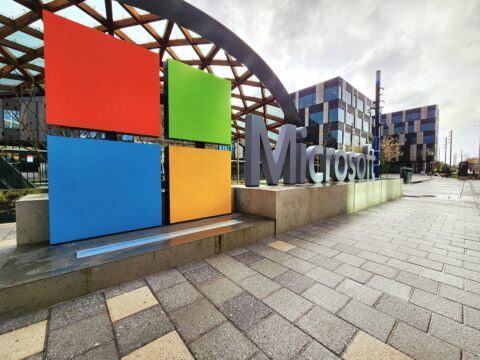Contents
In this article, we have discussed everything you need to know about bitcoin halving.
Bitcoin is a decentralized digital currency that was created in 2009 by an unknown individual or group using the pseudonym Satoshi Nakamoto. Bitcoin uses a peer-to-peer network to process transactions that are recorded on a public distributed ledger called the blockchain.
Bitcoin was the first successful implementation of blockchain technology and cryptocurrency. Bitcoin introduced the concept of mining, which is the process of verifying and adding new transactions to the blockchain. Miners are rewarded for their work with a small amount of bitcoin for each block added. The supply of bitcoin is limited to 21 million coins and issuance decreases over time through an event called the halving.
Unlike traditional fiat currencies that are controlled by central banks, bitcoin operates independently from central authorities like governments, banks, and financial institutions. Bitcoin does not rely on monetary policy and is not affected by inflation. Instead, it relies on cryptography and a set protocol governing its coin generation (mining) and transaction verification processes. Bitcoin can be used for online purchases and transferring value digitally without third party intermediaries.
What is Bitcoin Halving?
Bitcoin halving is the halving of the block reward that bitcoin miners receive when they successfully mine a block. The bitcoin network has a predefined schedule that dictates when a halving will occur and the block reward will be cut in half.
The bitcoin protocol has a set supply of 21 million bitcoins that can ever exist. When the network first launched in 2009, the block reward was set at 50 bitcoins per block. After every 210,000 blocks mined, which takes roughly 4 years, the block reward is programmed to cut in half. This will continue until all 21 million bitcoins have been mined, which is estimated to happen around the year 2140.
So far, bitcoin has gone through two halvings:
- The first halving was in November 2012 when the block reward dropped from 50 to 25 bitcoins.
- The second halving was in July 2016 when it dropped from 25 to 12.5 bitcoins.
The next halving is estimated to happen in 2024 when the block reward will reduce from the current 6.25 bitcoins to 3.125 bitcoins per block.
Halvings are significant because they lead to scarcity and potentially increase the value of bitcoin. With fewer new bitcoins being minted with each halving, supply is reduced. If demand remains constant or increases, basic economic theory states that prices will rise as supply decreases. Halvings also impact the profitability of bitcoin miners, as they receive less bitcoin for performing the same work validating transactions.
How Bitcoin Halving Works
The bitcoin network has a hardcoded rule written into the bitcoin code that causes the reward for mining new blocks to be cut in half every 210,000 blocks, or approximately every 4 years. This event is called “Bitcoin Halving”.
The bitcoin code specifies that each new block will reward bitcoin miners with new bitcoin. Originally, in 2009, the mining reward was set at 50 bitcoins per block. In November 2012, the first halving occurred and the mining reward dropped to 25 bitcoins. In July 2016, the second halving occurred, and the reward became 12.5 bitcoins. In May 2020, the third halving took place, decreasing the reward to 6.25 bitcoins.
This halving algorithm was created by Satoshi Nakamoto to intentionally cap the total supply of bitcoins that will ever exist at 21 million. By reducing the rate new bitcoins are created by 50% every 4 years, the total bitcoin supply will asymptotically approach 21 million over time. However, due to the exponential decay in issuance, it is estimated that it will take over 100 years for the final bitcoin to be mined.
The Bitcoin Halving has a direct impact on the supply side equation of bitcoin. Since the demand for bitcoin is constantly changing, reducing the new supply of bitcoin introduces new price dynamics. The decreased supply makes it more difficult to increase the circulating supply, which can increase bitcoin’s price over time if demand remains steady or increases.
Previous Bitcoin Halvings
The Bitcoin network has gone through two halvings so far, one in 2012 and another in 2016. These halvings have had significant impacts on the price and mining of Bitcoin.
The first Bitcoin halving occurred on November 28, 2012. Before the halving, miners received 50 BTC per block. After the halving, this was cut to 25 BTC per block. At the time, Bitcoin was still relatively unknown and traded at around $12 per coin. Over the next year, Bitcoin’s price rose steadily, eventually reaching highs of over $1,000 by December 2013. Many attribute this massive rise in price to the halving, which reduced the supply of new Bitcoin being created.
The second Bitcoin halving took place on July 9, 2016. The block reward decreased from 25 BTC to 12.5 BTC. In the months leading up to the halving, Bitcoin’s price was around $650. Over the next 18 months, Bitcoin exploded in value, reaching highs of nearly $20,000 by December 2017. Again, the halving is seen as a catalyst for this parabolic price increase. With miners receiving fewer new coins, yet demand increasing, this supply shock lead to rising prices.
Both of these halvings limited the supply of new Bitcoin coming into circulation. With demand continuing to increase, basic economics predicts that reduced supply combined with high demand will lead to higher prices. The data clearly shows the tremendous impact these halvings had on increasing the value of Bitcoin. Many experts expect the next halving in 2024 to set the stage for another bull run.
Economic Impact of Bitcoin Halving
The Bitcoin halving has significant economic implications due to the reduced rate of new supply entering the market. Economically, Bitcoin operates on the principles of supply and demand. When the supply of new Bitcoin entering circulation is cut in half, it creates deflationary pressure on the cryptocurrency.
The halving directly impacts the stock-to-flow ratio of Bitcoin. The stock-to-flow ratio measures the existing supply (stock) against the new supply entering circulation (flow) each year. As the rate of new supply is reduced with each halving event, the stock-to-flow ratio increases.
A higher stock-to-flow ratio indicates that an asset is becoming more scarce. Many investors believe the halving increases the scarcity and long-term value of Bitcoin as an asset. With less inflation, Bitcoin is designed to function more like gold, with a finite supply and deflationary issuance model.
Some economists argue that the halving could also have inflationary effects on Bitcoin prices in the short-term. With mining rewards reduced by half, some miners may shut down operations if they are no longer profitable. This could reduce the overall hashrate securing the network until the Bitcoin price rises sufficiently to incentivize more miners to return. This short-term instability could lead to price volatility following halving events.
Overall, the halving aims to both control monetary inflation and create digital scarcity. With such a significant reduction in the new supply of Bitcoin, basic economic theory would suggest strong upward pressure on the price over the long-term. The halving helps maintain Bitcoin’s properties as hard money and an attractive store of value for investors.
Price Impact of Halving
Bitcoin’s halving has historically had a significant impact on its price. The reduced supply of new bitcoins entering the market combined with steady or increasing demand has led to major bull runs following the past two halvings.
For example, in the months following the first halving in November 2012, bitcoin’s price surged from around $12 to over $1,100 by December 2013. After the second halving in July 2016, bitcoin rose from around $650 to nearly $20,000 by December 2017.
The key reason is simple economics – when the supply of new bitcoins is cut in half, each bitcoin becomes more scarce. If demand remains the same or increases, basic supply and demand indicates the price should rise as a result.
Many analysts predict the next halving expected in 2024 will also lead to a new bitcoin bull market. However, the magnitude of the price increase is debated. Some believe bitcoin could reach $100,000 or higher following the next halving, while others expect a more modest rise to the $30,000 to $60,000 level if history repeats.
Ultimately, no one can predict bitcoin’s price with certainty. Global economic conditions, adoption rates, regulation, and competition from other cryptocurrencies will all play a role. But if past halvings are any indicator, bitcoin’s next halving will likely be an exciting time for investors and lead to renewed interest and significant price appreciation over the following 12-24 months.
Impact of Halving on Mining
Halving significantly impacts Bitcoin mining operations and profitability. As the block reward cuts in half, miners receive fewer and fewer new Bitcoins for processing transactions on the network. This makes Bitcoin mining less lucrative over time, especially for small, independent miners.
The halving leads to several important changes in mining:
- Increased mining difficulty – With each halving, mining difficulty increases to compensate for the lower block rewards. This makes profitable mining require more specialized, high-performance hardware. Older ASIC miners and GPU rigs eventually cannot keep up.
- Obsolete equipment – The rapid improvement in Bitcoin mining hardware leaves previous generations of hardware practically obsolete with each halving. Many miners are forced to update to newer, more efficient models to remain competitive. This constant equipment upgrading is costly.
- Consolidation – With lower revenues but higher costs, Bitcoin mining becomes increasingly dominated by large mining companies and pools. It’s difficult for individual, small-scale miners to remain profitable after multiple halvings. This leads to consolidation as independent miners shut down or join established pools.
The halving accelerates the professionalization and corporatization of the Bitcoin mining sector. Over time, mining shifts from an activity that average users could participate in from home to a highly specialized industry with major barriers to entry. This centralizing force goes against the decentralized ethos of Bitcoin, which aimed to allow anyone to participate in securing the network.
Future Bitcoin Halvings
The Bitcoin network has a fixed supply of 21 million coins, so halving events will continue occurring every 4 years until the maximum supply is reached. Based on the predetermined block reward schedule, there are currently two more halvings expected in the future:
- The 2024 Halving – Estimated to occur in 2024, this halving will reduce the block reward from 6.25 BTC to 3.125 BTC per block. At the current price, this would make each block reward worth around $62,500.
- The 2028 Halving – The fifth halving event is projected to happen in 2028, further decreasing the block reward to 1.5625 BTC per block. This would value each block at roughly $31,250 based on the present BTC price.
Some industry analysts predict that as the block rewards continue decreasing while Bitcoin adoption rises over time, the price impact of each halving event could diminish. However, halvings are still expected to have a positive effect on Bitcoin prices in the long run as new supply issuance slows down.
By the 2040s, over 90% of Bitcoin’s total supply will have been created. Once the 21 million hard cap is reached, miners will rely entirely on network fees for revenue rather than block rewards. At that point, halving events will no longer occur. But for at least the next two decades, halvings are anticipated to play a key role in Bitcoin’s circulating supply and valuation.
Halving Dates and Bitcoin Price
The Bitcoin halving occurs roughly every 4 years, cutting the block reward issued to miners in half. There appears to be a correlation between Bitcoin’s price and its halving events. However, it’s important to note that correlation does not imply causation.
While some believe the halving directly leads to significant price appreciation, in reality there are many complex factors that drive Bitcoin’s price cycles. The halving reduces the inflation rate of new Bitcoin entering circulation. This reduced supply paired with steady or increasing demand can put upward pressure on Bitcoin’s price over time. However, this is not guaranteed, and the market must react for it to impact price.
Additionally, the halving leads to decreased miner revenue, which can temporarily disrupt the equilibrium between supply and demand. Historical data shows that Bitcoin’s price tends to begin appreciating well in advance of the halving. After the halving occurs, the price continues rising for a period of time. However, external factors like mainstream adoption and media attention also significantly influence Bitcoin’s price.
Overall, the halving marks a milestone for Bitcoin and provides insights into the health of the network. But many factors drive the Bitcoin price cycles. While the halving may contribute, it does not directly cause significant price increases on its own. The market reaction determines the ultimate impact on price.
Conclusion
Bitcoin halving is one of the most anticipated events in the cryptocurrency space. Every 4 years, the bitcoin block reward is cut in half, reducing the rate at which new bitcoins enter circulation. This built-in mechanism of digital scarcity is a fundamental reason why bitcoin is considered “digital gold”.
The previous two halvings have preceded massive bull runs in the bitcoin price, though past performance does not guarantee future results. While the economics would suggest halving events put upward pressure on price over the long-term, the markets tend to be unpredictable in the short-term.
As the block reward continues decreasing every 4 years, transaction fees will play a larger role in miner compensation and network security. Some fear this may lead to excessive fee pressure, pricing out certain users and use cases over time. However, improvements like the Lightning Network aim to keep bitcoin fast, cheap, and scalable.
The next bitcoin halving is expected in 2024, when the block reward will drop to 3.125 BTC. As the maximum supply of 21 million bitcoins is approached, the inflation rate and pace of new supply will keep decreasing.
Bitcoin halving events are always historic occasions for believers in the cryptocurrency revolution. While their exact effects are debatable, halvings highlight the programmatic monetary policy that makes bitcoin unique. As the network continues maturing, many are optimistic about bitcoin’s future role as a global currency and store of value.








